
Senior physics writer Emily Conover joined Science News in 2016. She has a Ph.D. in physics from the University of Chicago, where she studied the weird ways of neutrinos, tiny elementary particles that can zip straight through the Earth. She got her first taste of science writing as a AAAS Mass Media Fellow for the Milwaukee Journal Sentinel. She has previously written for Science Magazine and the American Physical Society. She is a two-time winner of the D.C. Science Writers’ Association Newsbrief award, and a winner of the Acoustical Society of America’s Science Communication Award.

Trustworthy journalism comes at a price.
Scientists and journalists share a core belief in questioning, observing and verifying to reach the truth. Science News reports on crucial research and discovery across science disciplines. We need your financial support to make it happen – every contribution makes a difference.
All Stories by Emily Conover
-
 Physics
PhysicsNewfound ‘altermagnets’ shatter the magnetic status quo
The newly discovered type of magnetic material could improve existing tech, including making better and faster hard drives.
-
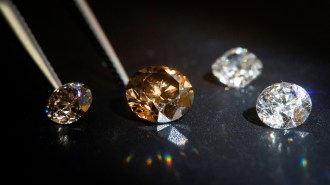 Chemistry
ChemistryA new method of making diamonds doesn’t require extreme pressure
Lab-grown diamonds can form at atmospheric pressure in a liquid of gallium, iron, nickel and silicon.
-
 Physics
PhysicsSeparating science fact from fiction in Netflix’s ‘3 Body Problem’
Real science underpins much of the action in the show — along with a hefty dose of artistic liberty.
-
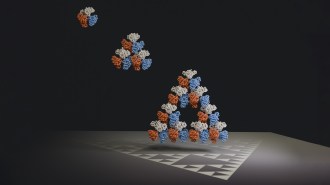 Math
MathScientists find a naturally occurring molecule that forms a fractal
The protein assembles itself into a repeating triangle pattern. The fractal seems to be an accident of evolution, scientists say.
-
 Space
Space50 years ago, scientists found a lunar rock nearly as old as the moon
Studies of such rocks continue to reveal secrets about the moon’s history.
-
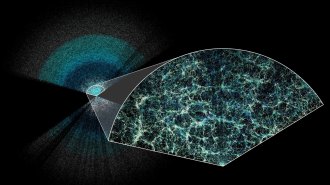 Cosmology
CosmologyThe largest 3-D map of the universe reveals hints of dark energy’s secrets
A year of data from DESI, the Dark Energy Spectroscopic Instrument, suggests that, contrary to expectations, dark energy might vary over time.
-
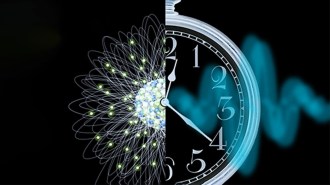 Physics
PhysicsPhysicists take a major step toward making a nuclear clock
By tweaking the energy of a thorium nucleus with a laser, scientists demonstrated a key step to building clocks based on the physics of atomic nuclei.
-
 Particle Physics
Particle PhysicsForests might serve as enormous neutrino detectors
Trees could act as antennas that pick up radio waves of ultra-high energy neutrinos interactions, one physicist proposes.
-
 Physics
Physics‘Countdown’ takes stock of the U.S. nuclear weapons stockpile
Physicists grapple with their role as stewards of the United States’ aging nuclear weapons in the new book by Sarah Scoles.
-
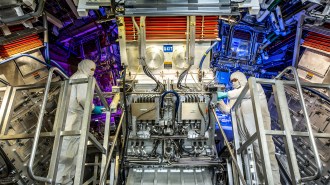 Physics
PhysicsHere’s how scientists reached nuclear fusion ‘ignition’ for the first time
The first fusion experiment to produce an energy excess required meticulous planning and also revealed a long-predicted heating phenomenon.
-
 Artificial Intelligence
Artificial IntelligenceAI chatbots can be tricked into misbehaving. Can scientists stop it?
To develop better safeguards, computer scientists are studying how people have manipulated generative AI chatbots into answering harmful questions.
-
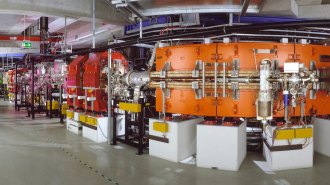 Physics
PhysicsA pivotal quantum theory holds up even in extreme electric fields
Quantum electrodynamics, which describes how charged particles and light interact, works in the strong fields around highly ionized uranium atoms.